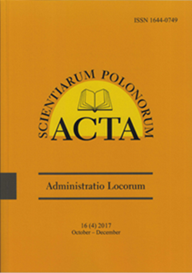Public needs as condition for limitating private property right to land
Public needs as condition for limitating private property right to land
Author(s): Yuriy Ginzburg, Ellina KhashchinaSubject(s): Law on Economics
Published by: Wydawnictwo Uniwersytetu Warmińsko-Mazurskiego w Olsztynie
Keywords: private property; public needs; expropriation; withdrawal; just compensation;
Summary/Abstract: The article is devoted to the analysis of foreign legislation regulating the conditions for seizure of landplots to meet public needs. The evolution of approaches to understanding the private property rightfrom Antiquity to Modern age as long as the specific character of property right to land includingpossibilities of its legal limitation for meeting socially prominent aims are explored. Special attentionis paid to the Eastern European countries’ legislation as their statutory regulation of private propertyout of the command economy is relatively young. Having analyzed the constitutions, land legislationand law enforcement practice of several foreign states a conclusion is made about a similar legalstructure of land withdrawal where expropriation is allowed in favor of both public and privatesubjects if their activity meets socially significant needs of a wide range of people and achieving thisgoal by any other way is impossible. The American practice of “economic analysis of law” allowingto appreciate the public benefit by the economic tools is positively assessed. It is also stated thatit is impossible to envisage a list of specific situations that fall under the concept “public needs” andit is necessary to assess the correlation of public and private interests in each specific case. At thesame time, in order to protect the rights of owners such an assessment should be carried out beforethe seizure including by public hearings.
Journal: Acta Scientiarum Polonorum Administratio Locorum
- Issue Year: 19/2020
- Issue No: 4
- Page Range: 201-209
- Page Count: 9
- Language: English

